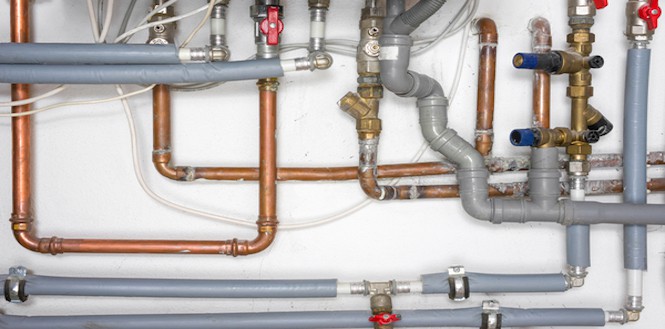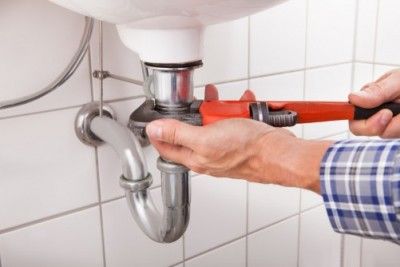Examining Your House's Plumbing System Anatomy
Examining Your House's Plumbing System Anatomy
Blog Article
This great article underneath pertaining to Anatomy of a House: Understanding the Components is definitely stimulating. Try it and make your own personal final thoughts.

Understanding exactly how your home's plumbing system functions is vital for every single homeowner. From providing tidy water for drinking, food preparation, and bathing to securely removing wastewater, a properly maintained pipes system is vital for your household's health and wellness and comfort. In this thorough guide, we'll check out the intricate network that comprises your home's plumbing and deal tips on maintenance, upgrades, and dealing with common concerns.
Introduction
Your home's pipes system is greater than simply a network of pipes; it's an intricate system that guarantees you have accessibility to tidy water and effective wastewater elimination. Knowing its components and exactly how they collaborate can assist you avoid expensive repairs and make sure whatever runs efficiently.
Standard Elements of a Pipes System
Pipelines and Tubing
At the heart of your plumbing system are the pipelines and tubing that carry water throughout your home. These can be made of different materials such as copper, PVC, or PEX, each with its benefits in terms of sturdiness and cost-effectiveness.
Components: Sinks, Toilets, Showers, etc.
Fixtures like sinks, bathrooms, showers, and tubs are where water is made use of in your house. Recognizing just how these components attach to the pipes system aids in detecting troubles and intending upgrades.
Shutoffs and Shut-off Points
Valves regulate the flow of water in your pipes system. Shut-off shutoffs are important throughout emergency situations or when you require to make fixings, allowing you to isolate parts of the system without disrupting water flow to the entire home.
Water System System
Main Water Line
The main water line attaches your home to the metropolitan water supply or a personal well. It's where water enters your home and is distributed to different fixtures.
Water Meter and Pressure Regulator
The water meter measures your water use, while a stress regulatory authority makes sure that water flows at a secure stress throughout your home's pipes system, avoiding damage to pipelines and components.
Cold Water vs. Hot Water Lines
Recognizing the distinction in between cold water lines, which supply water straight from the primary, and hot water lines, which carry warmed water from the hot water heater, assists in troubleshooting and planning for upgrades.
Drain System
Drain Piping and Traps
Drain pipelines carry wastewater far from sinks, showers, and bathrooms to the sewer or septic system. Catches avoid sewage system gases from entering your home and additionally trap debris that can trigger clogs.
Air flow Pipelines
Air flow pipes permit air right into the water drainage system, stopping suction that could reduce drain and cause catches to empty. Proper air flow is important for maintaining the honesty of your plumbing system.
Value of Proper Water Drainage
Making sure proper drainage protects against backups and water damages. Routinely cleaning up drains and keeping traps can protect against costly repair services and prolong the life of your plumbing system.
Water Heater
Types of Hot Water Heater
Water heaters can be tankless or standard tank-style. Tankless heating units warmth water on demand, while containers store warmed water for immediate usage.
Just How Water Heaters Link to the Pipes System
Understanding how hot water heater connect to both the cold water supply and hot water circulation lines helps in identifying concerns like not enough hot water or leaks.
Upkeep Tips for Water Heaters
Routinely purging your water heater to eliminate debris, checking the temperature settings, and checking for leaks can prolong its life-span and improve energy performance.
Typical Pipes Issues
Leaks and Their Reasons
Leakages can occur because of maturing pipes, loose installations, or high water pressure. Attending to leakages without delay stops water damage and mold growth.
Clogs and Blockages
Clogs in drains and commodes are frequently triggered by purging non-flushable things or a buildup of grease and hair. Making use of drain screens and bearing in mind what goes down your drains can avoid clogs.
Indications of Pipes Troubles to Watch For
Low tide pressure, slow drains pipes, foul odors, or unusually high water expenses are indications of prospective pipes troubles that need to be resolved immediately.
Plumbing Upkeep Tips
Routine Examinations and Checks
Schedule yearly plumbing examinations to capture concerns early. Seek indications of leaks, corrosion, or mineral build-up in taps and showerheads.
Do It Yourself Upkeep Tasks
Basic tasks like cleansing tap aerators, looking for bathroom leaks using dye tablets, or shielding revealed pipes in chilly climates can prevent significant pipes concerns.
When to Call an Expert Plumbing Professional
Know when a pipes problem needs professional experience. Trying complicated repair work without proper expertise can result in more damage and higher repair service expenses.
Updating Your Plumbing System
Factors for Updating
Updating to water-efficient fixtures or replacing old pipelines can enhance water high quality, decrease water bills, and raise the value of your home.
Modern Pipes Technologies and Their Benefits
Discover modern technologies like clever leak detectors, water-saving toilets, and energy-efficient hot water heater that can conserve cash and decrease environmental influence.
Expense Considerations and ROI
Determine the upfront prices versus long-lasting financial savings when thinking about plumbing upgrades. Lots of upgrades pay for themselves via minimized energy expenses and fewer fixings.
Environmental Influence and Conservation
Water-Saving Components and Appliances
Installing low-flow taps, showerheads, and bathrooms can dramatically minimize water usage without giving up performance.
Tips for Lowering Water Use
Straightforward habits like dealing with leaks promptly, taking shorter showers, and running complete tons of washing and recipes can save water and reduced your utility expenses.
Eco-Friendly Plumbing Options
Take into consideration lasting plumbing products like bamboo for floor covering, which is durable and environment-friendly, or recycled glass for countertops.
Emergency Preparedness
Actions to Take During a Pipes Emergency
Know where your shut-off shutoffs are located and just how to shut off the water in case of a burst pipe or significant leak.
Significance of Having Emergency Situation Contacts Helpful
Maintain contact information for regional plumbing technicians or emergency solutions conveniently offered for fast feedback during a plumbing dilemma.
Do It Yourself Emergency Fixes (When Suitable).
Momentary solutions like using duct tape to patch a leaking pipeline or positioning a container under a leaking tap can decrease damages till a professional plumbing professional arrives.
Conclusion.
Recognizing the composition of your home's plumbing system empowers you to preserve it successfully, saving time and money on repairs. By following normal upkeep regimens and staying notified regarding contemporary plumbing innovations, you can ensure your plumbing system operates effectively for years ahead.
HOW YOUR PLUMBING SYSTEM WORKS
Which Pipes Do What?
Blue lines = fresh water supply entering the building
Red lines = hot water supply entering the building
Grey lines = pipes carrying waste away from the building and venting pipes carrying gases away from the building (through the roof)
YOUR MAIN PLUMBING SYSTEMS
There are two main plumbing systems that support your home s basic plumbing needs one that brings clean water into your home, and one that sends dirty water away from your home. Connected to the toilet, bath, shower, and other faucets in your home, these two systems keep your water flowing in the right directions.
ACCESSING FRESH WATER
Fresh and clean water is brought into your home through the main water supply line . Filtered through one pipe, this water is pressured to flow into the various fixtures in your home at any given time.
This water can be sourced from a well located on your property, a pond or river (mostly cottages), or, as in most cases, from the city s municipal water treatment centre. However, it is important to note that water that is untreated, such as the water siphoned from ponds or rivers, may not be safe to drink. Personal water supplies always need to be treated for hardness and contaminants before consumed.
MUNICIPAL WATER SUPPLIES
Improve taste and odour
Remove sediment
Eliminate hardness
Reduce chlorine
COLD WATER SUPPLY VS. HOT WATER SUPPLY
Cold water flows into your home or building through the service line, which then distributes hot or cold water to your fixtures. This line is most commonly run through a central column that runs floor to floor. Hot water runs in short and straight pipes as the longer the pipeline, the more heat that will be lost in the transfer. Having shorter pipes also allows residents to access hot water more quickly.
WASTE WATER SYSTEM
Your wastewater system is divided into two parts pipes that send wastewater away from your home and venting pipes that send sewer gas away from your home. Sewage water travels through pipes that flush the water and waste towards local sewers that are operated and managed by your city or town. Most sewer systems rely on gravity to move the wastewater to where it needs to go.
The further away from your toilet or sink, the larger wastewater pipes become. This allows for waste to be disposed of from various parts of your home or business at once without pipe blockages. The angle and flow of these pipes are also essential for keeping your waste pipes clear of build up.
https://harrisplumbing.ca/how-your-home-plumbing-system-works/

HOW YOUR PLUMBING SYSTEM WORKS
Which Pipes Do What?
YOUR MAIN PLUMBING SYSTEMS
There are two main plumbing systems that support your home s basic plumbing needs one that brings clean water into your home, and one that sends dirty water away from your home. Connected to the toilet, bath, shower, and other faucets in your home, these two systems keep your water flowing in the right directions.
ACCESSING FRESH WATER
Fresh and clean water is brought into your home through the main water supply line . Filtered through one pipe, this water is pressured to flow into the various fixtures in your home at any given time.
This water can be sourced from a well located on your property, a pond or river (mostly cottages), or, as in most cases, from the city s municipal water treatment centre. However, it is important to note that water that is untreated, such as the water siphoned from ponds or rivers, may not be safe to drink. Personal water supplies always need to be treated for hardness and contaminants before consumed.
MUNICIPAL WATER SUPPLIES
COLD WATER SUPPLY VS. HOT WATER SUPPLY
Cold water flows into your home or building through the service line, which then distributes hot or cold water to your fixtures. This line is most commonly run through a central column that runs floor to floor. Hot water runs in short and straight pipes as the longer the pipeline, the more heat that will be lost in the transfer. Having shorter pipes also allows residents to access hot water more quickly.
WASTE WATER SYSTEM
Your wastewater system is divided into two parts pipes that send wastewater away from your home and venting pipes that send sewer gas away from your home. Sewage water travels through pipes that flush the water and waste towards local sewers that are operated and managed by your city or town. Most sewer systems rely on gravity to move the wastewater to where it needs to go.
The further away from your toilet or sink, the larger wastewater pipes become. This allows for waste to be disposed of from various parts of your home or business at once without pipe blockages. The angle and flow of these pipes are also essential for keeping your waste pipes clear of build up.
https://harrisplumbing.ca/how-your-home-plumbing-system-works/
I'm very focused on The Inner Workings of Your Home's Plumbing and I really hope you appreciated the blog entry. Do you know somebody who is fascinated about the niche? Please feel free to promote it. Thank you so much for taking the time to read it.
Contact Us Today Report this page